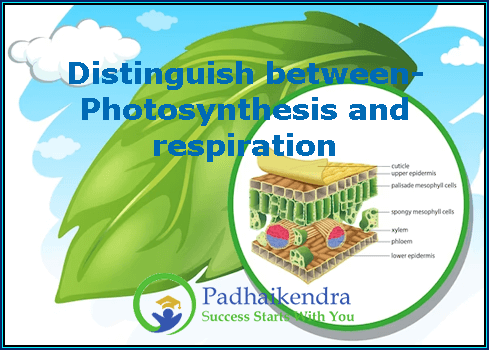Introduction of Photosynthesis with Equation
Imagine photosynthesis as a hidden orchestra, playing a symphony of energy conversion. At its core is a beautiful equation that encapsulates the essence of this process. Let’s explore this equation and the magic it holds.
The Photosynthesis Equation:
6 CO2 + 6 H2O + light energy → C6H12O6 + 6 O2
Sounds complex, doesn’t it? But let’s break it down into its melodious components:
6 CO2 (Carbon Dioxide): Imagine the invisible breath of plants. Just as we inhale oxygen, plants “breathe in” carbon dioxide from the air. This humble gas is the starting point of photosynthesis.
6 H2O (Water): Visualize the lifeblood of plants. Through their roots, plants absorb water from the soil. Water, with its hydrogen atoms, is another vital ingredient in this energy-creating alchemy.
Light Energy: Imagine the sun’s rays as golden keys to unlock energy. Sunlight serves as the driving force that sets photosynthesis in motion.
C6H12O6 (Glucose): Picture a sweet treasure—the energy-packed glucose molecule. Through the magic of photosynthesis, plants synthesize glucose, which becomes their primary energy source.
6 O2 (Oxygen): Think of oxygen as the song plants sing to the world. As a byproduct of photosynthesis, plants release oxygen, enriching the atmosphere and sustaining life.
Introduction of Respiration
Imagine respiration as a silent engine, churning behind the scenes to power every movement, thought, and heartbeat. Let’s introduce this vital process and delve into its core components.
Respiration: The Equation of Life
Respiration, like photosynthesis, is guided by an equation that encapsulates its essence. Let’s break down this equation and understand the symphony of molecules and energy that it represents.
The Respiration Equation:
C6H12O6 + 6 O2 → 6 CO2 + 6 H2O + energy (ATP)
Let’s translate this equation into its meaningful parts:
C6H12O6 (Glucose): Imagine this molecule as the fuel of life. Glucose, derived from the food we eat, is the energy-rich substance that drives cellular processes.
6 O2 (Oxygen): Visualize oxygen as the key to unlock this energy. We breathe in oxygen, and it’s essential for the efficient breakdown of glucose.
6 CO2 (Carbon Dioxide) and 6 H2O (Water): Picture these molecules as the remnants of energy combustion. As glucose breaks down, carbon dioxide and water are released as waste products.
Energy (ATP): Think of ATP as the currency of cells. The energy released during respiration is captured in ATP molecules, powering cellular activities.
Difference Between Photosynthesis and Respiration
| Aspect | Photosynthesis | Respiration |
| Definition | The process by which plants convert sunlight into energy-rich molecules, producing oxygen as a byproduct. | The process by which organisms convert food molecules into energy, producing carbon dioxide as a byproduct. |
| Occurrence | Primarily in plants, algae, and some bacteria. | Occurs in all living cells of plants, animals, and microorganisms. |
| Energy Source | Sunlight | Organic molecules (glucose) |
| Key Players | Chloroplasts and pigments (chlorophyll) | Mitochondria |
| Products | Glucose and oxygen | Carbon dioxide, water, and energy (ATP) |
| Purpose | To create energy-rich molecules (glucose) that power various cellular processes. | To release energy stored in glucose for cell activities. |
| Significance | Drives the base of food chains, sustains plant life, produces oxygen. | Powers cellular activities, generates energy for growth, movement, and reproduction. |
| Interrelation | Supplies the glucose needed for respiration. | Provides the oxygen necessary for the final stages of respiration. |
| Relationship | Complementary processes—products of one fuel the other. | Connected in a cycle—the carbon dioxide released during respiration is used in photosynthesis. |
| Role in Ecosystems | Primary producers in food chains, shape ecosystems. | Consumers in food chains, ensure energy flows through ecosystems. |
As we conclude our journey into the intricate balance between respiration and photosynthesis, remember that these processes are the yin and yang of life. One creates, while the other consumes; one releases oxygen, while the other produces carbon dioxide. It’s a dance that sustains ecosystems, powers cellular activities, and shapes the very landscape of our world.
From the sunlit leaves of a tree to the bustling cells within our bodies, respiration and photosynthesis are interconnected threads in the grand tapestry of life. Next time you stroll through a lush forest or take a deep breath of fresh air, think of the harmonious collaboration between these processes—the silent rhythm that keeps the symphony of existence in perfect tune.





